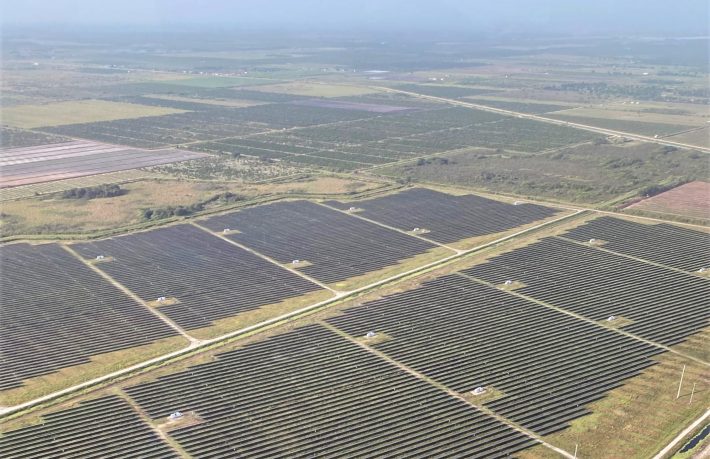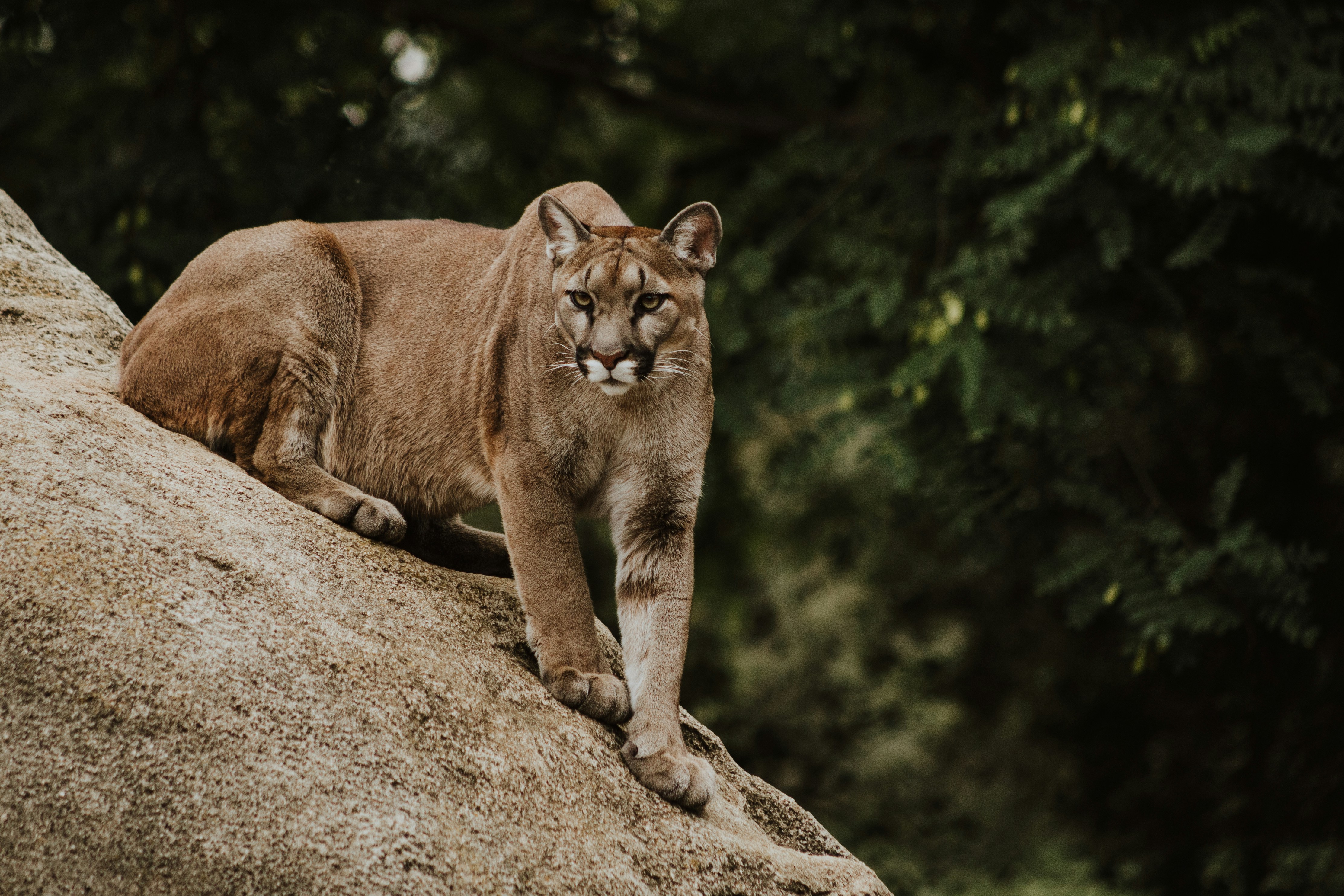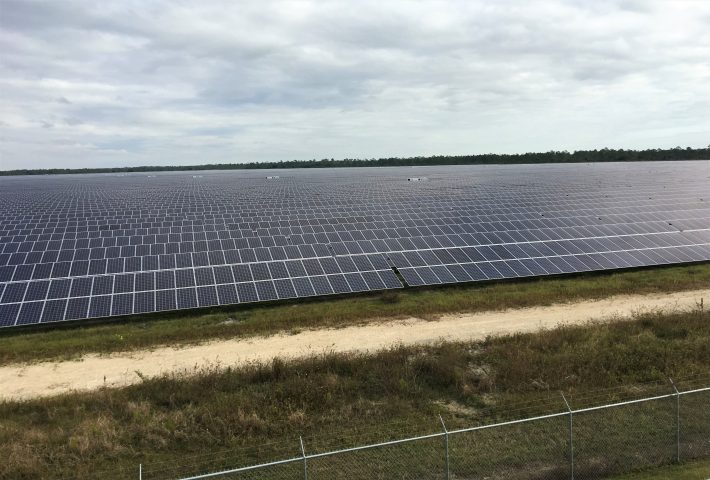Ecological trade off? Utility-scale solar energy impedes endangered florida panthers
Florida Atlantic University press release.
Study published in the Journal of Applied Ecology is first to document effects of utility-scale Solar energy installations on a large carnivore.

Florida, the “Sunshine State,” is rapidly increasing installation of utility-scale solar energy (USSE) facilities to combat carbon emissions and climate change. However, the expansion of renewable energy may come with environmental trade offs. Reducing the energy industry’s carbon footprint is impeding a large carnivore’s paw-print.
Once ranging throughout the south eastern United States, the only breeding population of the endangered Florida panther (Puma concolor coryi) is restricted to a little more than 5 percent of its historic range in South Florida. Florida panthers need corridors for dispersal, which most commonly occurs when they leave their maternal range to head out on their own. Moreover, they have very large home ranges – males need about 200 square miles, and their survival relies on their ability to move from protected area to protected area through wildlife corridors.
Researchers from Florida Atlantic University conducted the first study documenting the effect of USSE facilities on both habitat suitability and broad-scale connectivity of suitable habitat for any large carnivore. The study encompassed Peninsular Florida, excluding the Panhandle region, and focused on 45 installed or planned USSE facilities equalling about 27,688 acres – the average area of a USSE plant was about 615 acres.
Restoring dispersal corridors and gene flow throughout Peninsular Florida is critical to the Florida panther.
Researchers compared Florida panther habitat suitability and connectivity pre- and post-installation of USSE facilities within Peninsular Florida using random forest to predict probability of presence in 1 square kilometre cells and circuit theory to predict movement probability between the areas of suitable habitat. They also utilized panther radio-telemetry data collected by the Florida Fish and Wildlife Conservation Commission (FWC) from February 1981 to June 2020 to validate the predicted corridors.
Results of the study, published in the Journal of Applied Ecology, showed that most often, solar facilities were installed on grasslands and pastures (45.7 percent of total area replaced by solar facilities), and agricultural lands (34.9 percent). Forest was the third most impacted land cover category (13.2 percent). The findings suggest a substantial bias in locating USSE facilities within rural and undeveloped lands, which may provide connectivity that is sufficient for Florida panthers to roam, live and breed.
The greatest impacts occurred where facilities were located within a predicted major corridor, where current density was substantially greater than its surroundings, and where no alternative major corridors exist. Researchers found nine facilities located within major corridors connecting the current breeding habitat and other core areas with the potential to support populations of Florida panther. They found an additional 26 facilities located in rural areas between core areas with relatively weaker current densities compared to the major corridors, but that could potentially support dispersal. Of the remaining facilities in this study, four were within or directly adjacent to core areas, and only six facilities had no to very minimal potential expected impact on core areas or connectivity.

“Our study suggests that in the drive to shift our energy production to carbon neutral sources, while maintaining maximum profitability, wildlife outside human dominated landscapes with large ranges and dispersal potentials may be pushed into less favourable habitat or cut off completely from available habitat by degradation of corridors,” said Olena V. Leskova, M.S., senior author, a Ph.D. student in FAU’s Department of Geosciences within the Charles E. Schmidt College of Science and a geographer/geospatial scientist at the South Florida Water Management District.
Most USSE facilities in this study are surrounded by 6-foot-tall chain-link fences, topped with barbed wire, which is assumed to cause dispersal redirection. Some facilities use wildlife-friendly 6-foot split rail fences with wide mesh or short intervals of 4-foot split rail fences with wide mesh and some have double fences. Ecological costs of fencing to wildlife include disrupting their migration routes, dividing their habitats, restricting their range and evolutionary potential and directly or indirectly causing injury or death.
“Formally protecting and enhancing the remaining corridors between core areas at the landscape-scale will potentially ameliorate, or mitigate, the impacts already evident after installation of some facilities, and may prevent foreseeable impacts with additional planned facilities,” said Scott H. Markwith, Ph.D., co-author and a professor in FAU’s Department of Geosciences. “Restoring dispersal corridors and gene flow throughout Peninsular Florida is critical to the Florida panther, its prey, and ancillary species that benefit from a connected Florida ecosystem. This, in turn, will benefit biodiversity and species resiliency at the landscape-scale.”

Solar capacity in Florida is forecasted to grow over 10 years from 1,743 to 12,537 megawatts, with major electric companies planning substantial expansions. The researchers note that USSE facilities installed in clusters may create greater connectivity disruption than single facilities, especially when installed as a nearly continuous barrier perpendicular to the corridor. This practice of clustering facilities is attractive to energy companies because it decreases the amount of supporting infrastructure such as roads and transmission lines, and consolidates maintenance activities.
“We believe that regulatory and permitting agencies, and the electrical companies themselves, should begin taking landscape connectivity into account when planning and permitting USSE facility site locations,” said Leskova.
Impacts are expected on other endangered and protected wildlife species in Florida, including those that have large spatial requirements and/or specific habitat requirements, such as gopher tortoises, eastern indigo snakes, Florida scrub jay, Florida burrowing owls, and Florida black bears.
“Research involving additional impacted species will also fill gaps in environmental protection policy concerning both local and regional scale implications of utility-scale solar energy facilities,” said Markwith.
Study co-author is Robert Frakes, Ph.D., an ecologist specializing in panther habitat modelling and conservation.
You can read the full article for free here:
https://besjournals.onlinelibrary.wiley.com/doi/10.1111/1365-2664.14098
Like what we stand for?
Support our mission and help develop the next generation of ecologists by donating to the British Ecological Society.